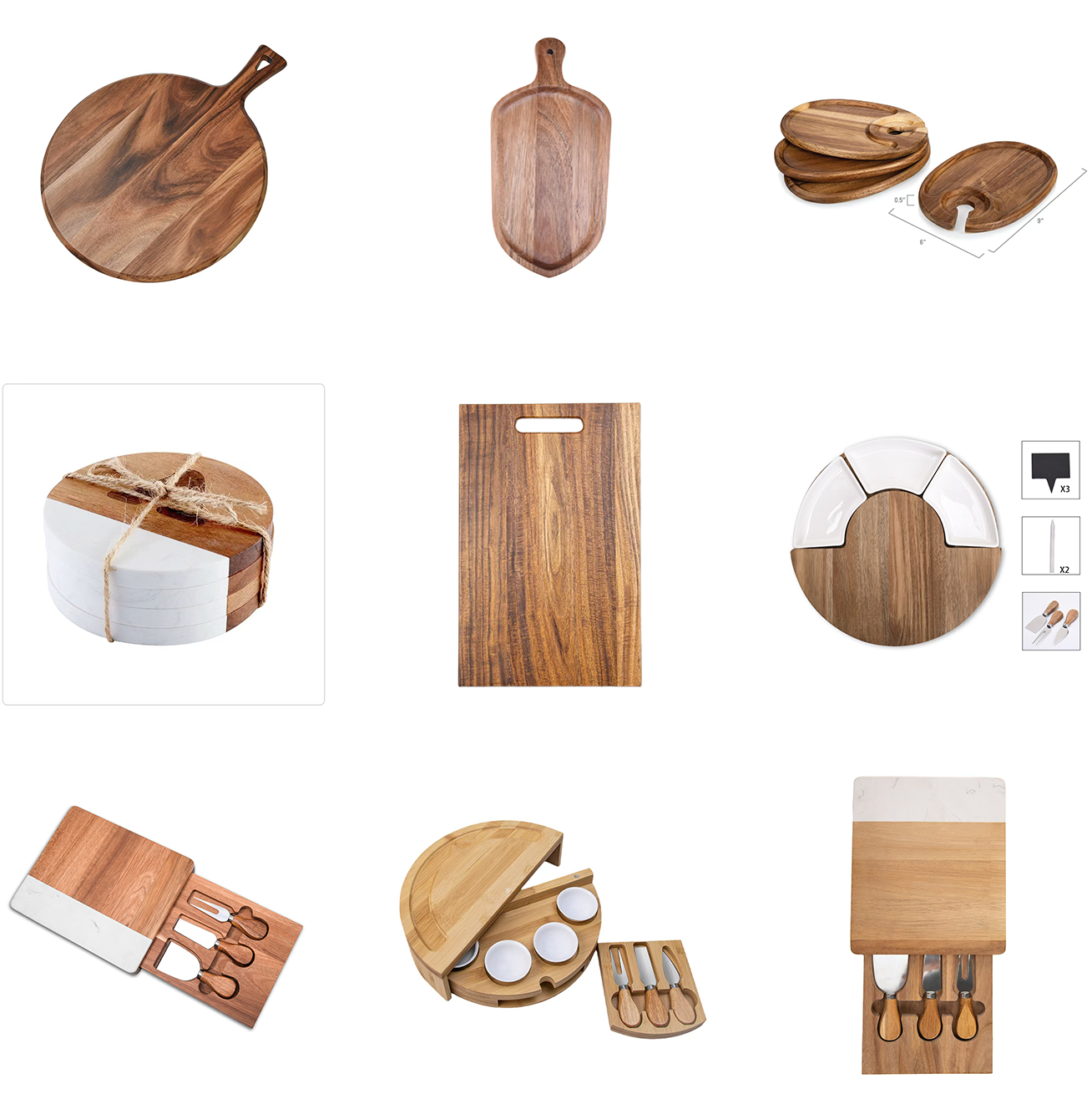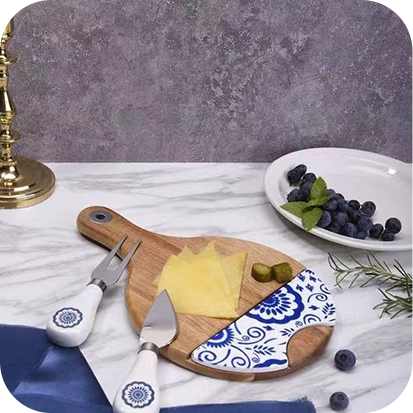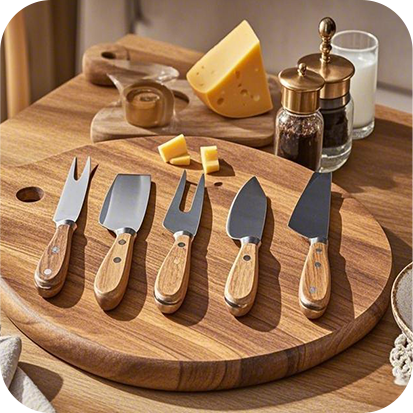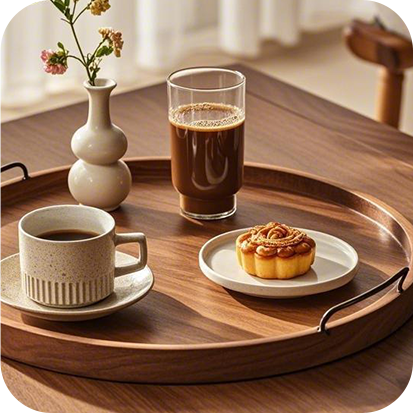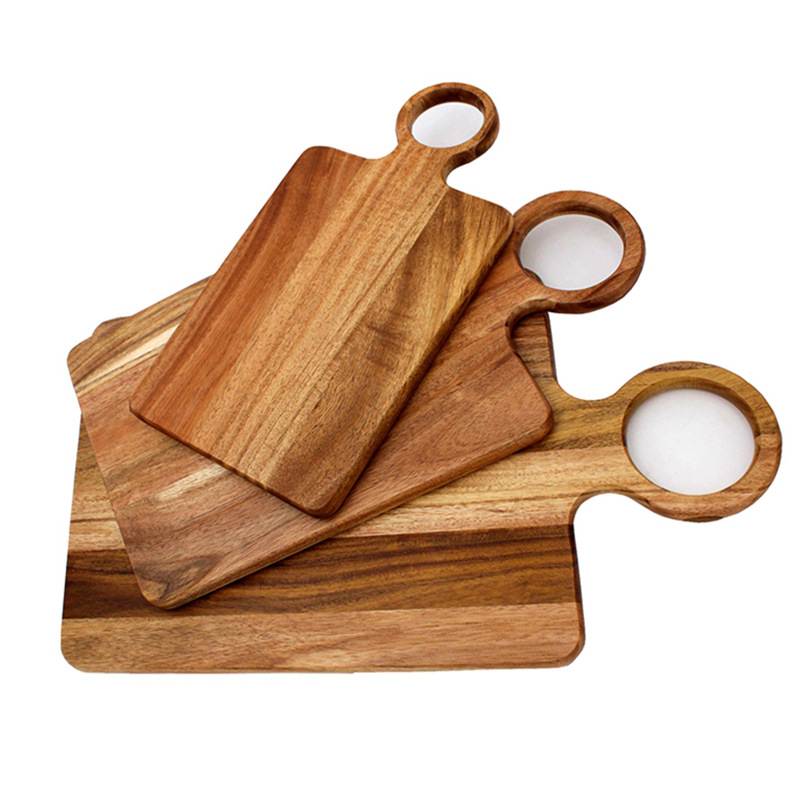
Understanding the Hardness of Acacia Wood and Its Impact on Kitchenware Design
When it comes to selecting the right material for cutting boards, serving trays, and cheese platters, the hardness of the wood is a crucial factor. Among various options, Acacia wood stands out for its exceptional balance between strength, durability, and aesthetic appeal. But what exactly does "hardness" mean in this context, and how does Acacia compare to other materials?
What is Wood Hardness?
Wood hardness is most commonly measured using the Janka hardness test, which determines a wood species' resistance to denting and wear. The test measures the force needed to embed a 0.444-inch steel ball halfway into a sample of wood.
The Hardness of Acacia Wood
Acacia wood typically ranks between 1,500 and 2,200 lbf (pounds-force) on the Janka scale, depending on the species and grain direction. This places it above many common hardwoods such as:
Maple (~1,450 lbf)
White Oak (~1,360 lbf)
Walnut (~1,010 lbf)
This strength makes Acacia an excellent choice for high-use kitchen items like the Non-reactive adjustable Acacia wood Cheese platter board, which requires resilience against knives, heat, and moisture.
How Hardness Impacts Usability
A high Janka rating means:
Less prone to knife gouging: Your board maintains a clean surface longer.
Greater resistance to wear and tear: Ideal for commercial use.
Slightly heavier and denser: Contributes to board stability but may affect portability.
However, the hardness also means more difficulty in engraving or shaping, which is why designs like the Eco-friendly Personalized Acacia wood Snack board benefit from CNC machining and precise finishing.
Application in Premium Kitchenware
Cheese Platters: The Chemical-free customizable Acacia wood Cheese platter board combines the durability of hardwood with non-toxic finishing. Its hardness prevents deep grooves that could harbor bacteria, ensuring hygiene and longevity.
Serving Trays: Products like the Safe for food Personalized Acacia wood Serving board use Acacia’s grain to resist staining from oils and sauces.
Snack Boards: The Sustainable food-safe customizable Acacia wood Acacia serving tray offers excellent durability for daily use while aligning with eco-conscious preferences.
Engraved Boards: Despite Acacia's hardness, advanced techniques ensure detailed branding, like in the Food contact safe Engraved Acacia wood Cheese board.
Comparing Acacia to Other Popular Woods
| Wood Type | Janka Hardness (lbf) | Notes |
|---|
| Acacia | 1500–2200 | Excellent for cutting boards, dense, and decorative |
| Maple | ~1450 | Common but less resistant to moisture |
| Bamboo | ~1380 | Sustainable, but often treated with glue |
| Teak | ~1000 | Good with water, but more expensive |
| Walnut | ~1010 | Softer, darker, more aesthetic than durable |
Acacia offers the best all-rounder performance for kitchenware: strong enough for function, beautiful enough for presentation, and sustainable enough for modern values.
Why Acacia Wood is a Smart Investment
Whether you’re designing for homes, gourmet restaurants, or lifestyle gifting, Acacia wood’s hardness ensures that your kitchenware remains functional, durable, and attractive for years.
We specializes in custom-crafted Acacia wood boards, offering food-safe finishes, personalized designs, and flexible production options to match your market needs.
Contact us at: info@justwoodencuttingboard.com
WhatsApp: +86 183 1248 3616
READ MORE:








